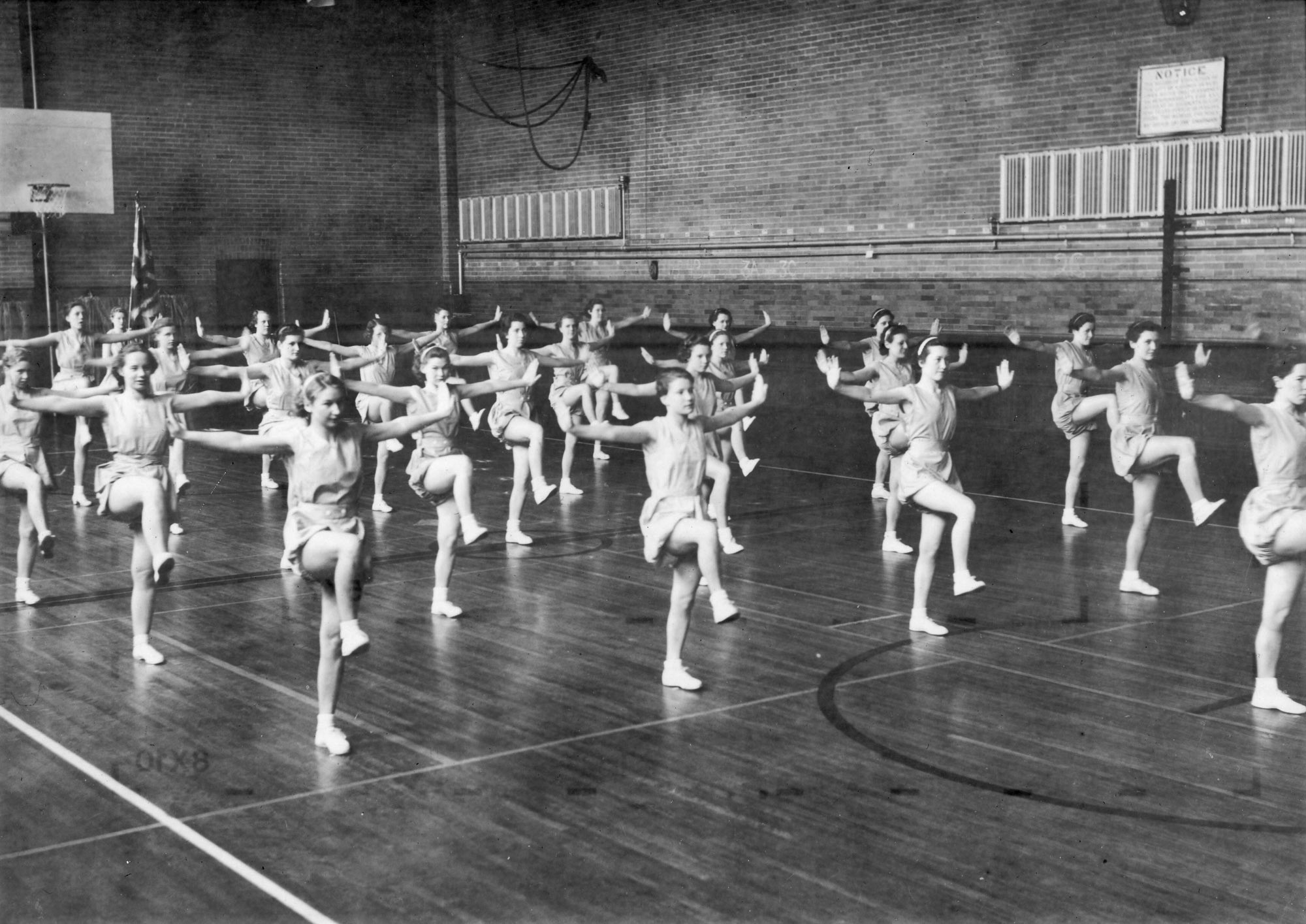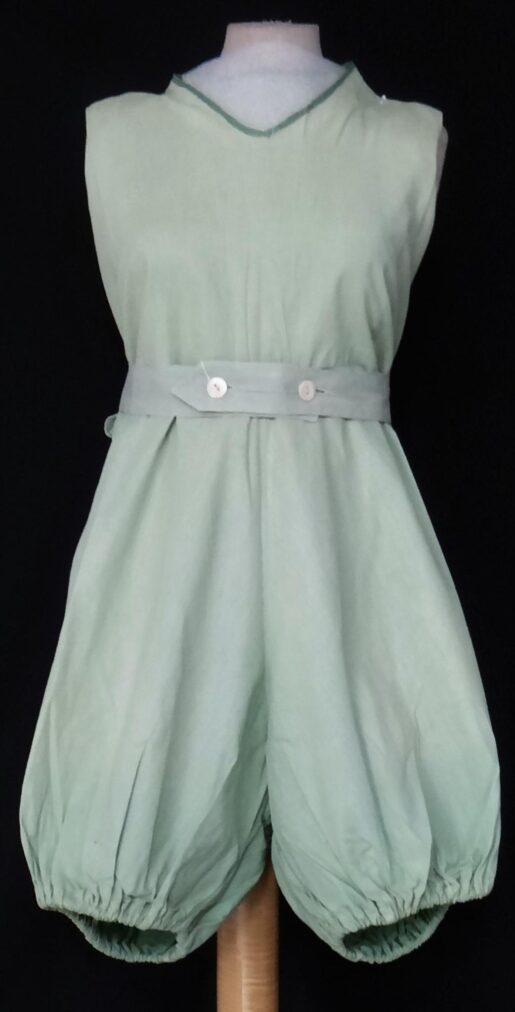
Photograph, Collection of Museum London, Gift of Mrs. Mary Green, 1982.
Mary West wore this gym uniform around 1936 as a student at Sir Adam Beck Collegiate Institute. In the photograph, girls sport the romper as they perform calisthenics. Each girl was responsible for cutting out and making – or having made – her uniform. Did you know that this romper is actually a revolutionary garment? It is the culmination of decades of development in women’s access to physical education as well as in women’s dress reform.
From the mid-nineteenth century, education leaders in Ontario accepted the importance of vigorous physical training and sports for boys. It was necessary for health, fostered masculinity, and inculcated habits of discipline. Girls, too, they argued benefited from exercise. But it had to be light and gentle. In this way it would develop their grace and beauty while not posing a threat to their reproductive capacity. This attitude continued well into the 20th century.

Gym Uniform, Collection of Museum London, Gift of Mrs. Mary Green, 1977.
What girls should wear while “getting physical” was the subject of much discussion. What would permit them to move and yet protect their modesty? To our 21st century eyes, late 19th century uniforms looked like every day clothing: skirts were ankle-length or longer and tight-fitting bodices clearly covered corseted torsos. If well out of the view of male eyes, girls and women participating in physical education could wear “Turkish trousers,” a bifurcated skirt. In this outfit, they looked like they were wearing a skirt until they moved at which point the divided skirt revealed itself.
In the early 20th century, hemlines gradually crept up and bodices were designed to promote ease of movement: Middy blouses and shorter skirts actually began life as sportswear before becoming fashionable street wear. Still there were concerns. Skirts could fly up and reveal underwear. Blouses could ride up and reveal torsos. Even without the presence of boys, such exposure could be embarrassing and could prevent a girl from participating to her full capacity. The magic of elastic helped bring about change. First, girls wore middy blouses with baggy bloomers elasticized at the knee. Stockings were still a necessity, though! The bloomers slimmed to knickers and the sleeves of the middy blouse shortened. This uniform permitted a new level of activity for many girls who could now run, jump and exert themselves as never before.
More change was yet to come. In 1933, historian Patricia Warner recounts, Mildred Howard of Mount Holyoke College worked with the sporting goods company Wright & Ditson, to design a gym uniform much like the one Mary West and her classmates wore. As a final nod to comfort and ease of movement, stockings disappeared to be replaced by short socks and sneakers.
Today, what is appropriate clothing for women’s physical activity is still a question we face. Modesty is still a concern for some, sometimes for reasons of faith. How much should women reveal? How much should they conceal? This should be every woman’s choice.